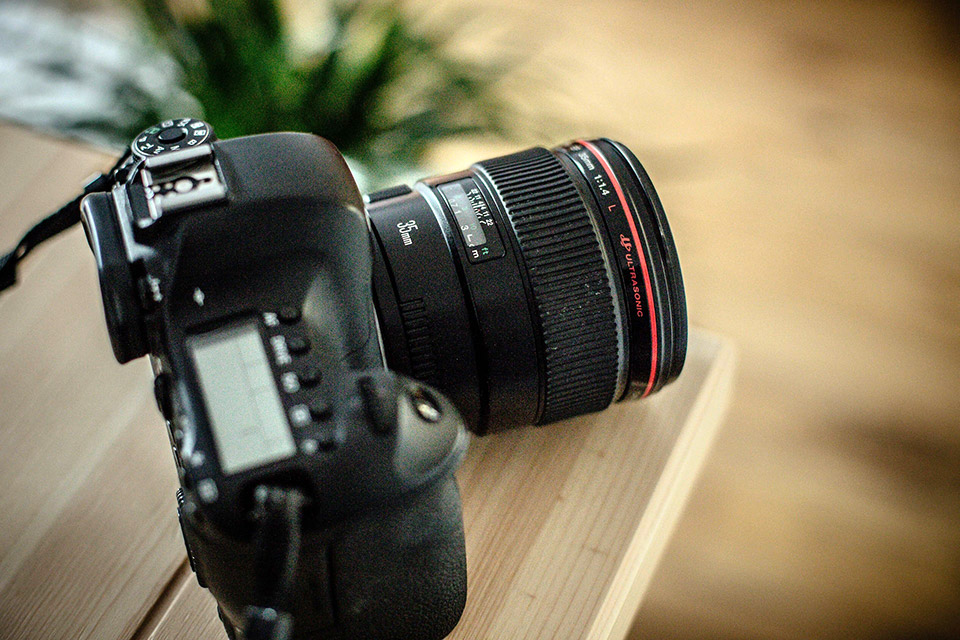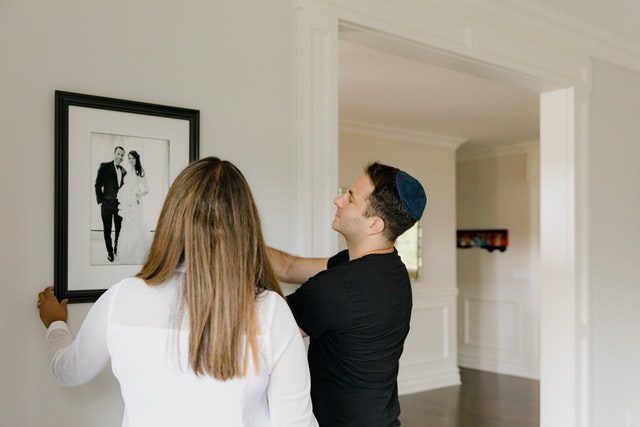As a wedding photographer, I’ve been to enough weddings that I can say confidently that every wedding is different. This is why having the right lens for the job is so important.
The differences between 50mm and 85mm
A 50mm lens is more flexible than an 85mm lens and is great for tight spaces because it allows you to get in close and can capture more of the scene. The 85mm, however, would have a harder time because it has a longer focal length.
Using a 50mm lens inside the church or the reception area is ideal because you can get closer to the subjects and capture more action.
An 85mm lens can come in handy in some instances where you need that extra reach. When I am shooting weddings, concerts, or other special events, I never left home without this lens.
For example, if you want to get a shot of the bride walking down the aisle or capture more of your subject while they’re standing on a stage at the wedding venue.

The 85mm would be a great choice because it can give you that extra reach and create beautiful bokeh effects as well.
But both lenses are actually great for capturing weddings, so you can’t go wrong with either one. It also largely depends on your shooting style and current needs.
Now, let’s talk about these two lenses individually.
Is an 85mm lens good for weddings?
Yes, an 85mm lens is great for weddings. It’s one of the most popular lenses for wedding photography because it offers a flattering perspective and can capture more details without having to get too close.
You can use it for portraits as well as candid shots of your subjects during the day or evening.
85mm lenses offer little to no distortion that can make your subject’s nose look bigger than it is, which is important if you’re shooting portraits.
They are also fairly fast lenses with a maximum aperture between f/1.2 to f/2 and can provide a shallow depth of field, so your subject will stand out against the background.

Their large aperture also helps when shooting indoors and in other low-light environments such as churches and reception halls.
And of course, they are known for producing creamier bokeh than 50mm lenses.
When it comes to headshots and half body portraits, the 85mm lens is the perfect tool to make sure your subjects look their best.
This lens also works well for environmental portraits of the bride and the groom and for capturing wedding details like the bouquet, wedding cake, and invitations.
Having an extra reach when shooting weddings is extremely useful, the 85mm lens can help you capture moments without being “in your face” that could be missed with shorter focal lengths such as the couple’s first kiss and their expressions during the ceremony.
The 85mm is also a wonderful lens for photographing small children and babies. It’s not too long that it makes them uncomfortable, but it gives you enough reach to capture their beautiful faces up close.
50mm lens for wedding photography
A 50mm lens is flexible and versatile. Many photographers use this lens as their go-to lens for weddings, especially when they are starting out.
A 50mm lens offers a perspective that’s closer to what the naked eye sees, which is why it’s great for capturing natural moments.

This lens is perfect for candid shots of the bride, groom, and their guests on their wedding day. I really like using a 50mm lens for portraits with my Canon 5D Mark II and my Sony a6000.
Shooting full body portraits with a 50mm lens should not be a problem even indoors since it has a closer minimum focusing distance than an 85mm lens.
50mm is also capable of capturing a small group of people, such as a couple with their family or guests.
It also works well in tight spaces such as churches and reception halls where longer lenses might not be an option due to limited space.
The size and weight of a 50mm lens are relatively small compared to an 85mm lens and it is easier to carry around without losing too much mobility. And, if you are worried about the price, don’t be. 50mm lenses are generally cheaper than 85mm with the same aperture.
Is a 50mm or 85mm lens better for portraits?
If you’re like me who loves to isolate their subjects by using a long lens, then 85mm is your best bet. It will allow you to capture the subject with a creamy background blur while still maintaining a sharp focus on your subject.
85mm lens minimizes distortion that can affect your subject’s physical appearance in your photos. And they offer a different perspective, the background compression is more noticeable and your subject will stand out more.
The bokeh it produces is creamy and less busy than let’s say the 50mm and 35mm lenses.
That’s why the 85mm lens is preferred by many photographers who capture a lot of headshots and half body portraits.
However, if you’re looking for a wider lens, then 50mm is the right choice.

50mm lenses are pretty good for 3/4 length and full length portraits and will give you a wider field of view that allows you to capture more of the background in your image while still keeping your subject sharp.
They are pretty good for establishing a story behind your shoots and are often used by photographers who want to capture a lot of background detail.
I can say that the 50mm is more of a documentary-style approach rather than the complete isolation of the subject that the 85mm provides.
They are also pretty versatile and it’s often the first upgrade for many photographers, especially those who are starting their journey.
All in all, choosing a lens between the two is just a matter of what you want to achieve.
If you want that shallow depth of field and really isolate your subjects from the background, then I’d recommend getting an 85mm lens. If you want to capture more of the environment around your subject, get a 50mm.
Both lenses are great for portraits, weddings, and everyday shooting. They are also both incredible in low-light situations.
Do I need 85mm if I have 50mm?
Do you need both of these prime lenses? I have the 50mm and 85mm lenses and I use them both quite often. These lenses are great for different situations and scenarios. For tight spaces and storytelling, I mostly use the 50mm.
While I use my 85mm if I want that unique look and creamy bokeh on my shots.
I can also say that they both complement each other.
The 50mm has a wider perspective and can be used indoors and in tight spaces, while the 85mm is great for isolating subjects and has a longer reach.
But you can only have two lenses in your arsenal, my choice would be a 35mm and an 85mm lens. The 35mm is a great all-around lens and can be used in a variety of situations.
It is great for portraits, documentary-style, or cinematic-style photography and landscapes. Having a 35 and an 85 can cover a lot of ground and is far a more flexible setup than a 50 and 85.
Do I need a 50mm If I have a 35mm?
You can get a 50mm if you already have a 35mm lens.
A 50mm can introduce a shallower depth of field on your portraits and has a longer reach than a 35mm. A 50mm is also easier to use and it is great for capturing single subjects.

Do I need a 50mm lens if I have an 18 55mm?
Yes. A fast prime like a 50mm lens is great for low light situations, and portraits and can make a big difference in your photography. The 50mm lens is a great entry into the world of prime lenses. It’s affordable and easy to use.
For shooting portraits, the 50mm lens is great because it has a shallow depth of field and it can make your subjects pop out of the background.
A 50mm lens is also great for shooting in low light conditions because it has a wide aperture.
And even as an everyday lens, the 50mm prime lens can teach you about composition and different angles by using a single focal length.
Do I need 50mm If I have a 24-70mm lens?
The answer depends on your needs and what you want to shoot. If you’re looking for a lens that covers the full range of focal lengths, then the 24-70mm zoom is probably better suited for you.
For portraits, however, 50mm prime lenses are often better because they have a wide aperture, which can give you a creamier and less distracting bokeh.
Having a 50mm is also ideal if you want to travel light and leave the heavier zoom lens at home.
When should you shoot with a 50mm lens?
50mm is a great focal length for portraiture, street photography, and landscapes. The wide aperture allows you to blur the background in your shots, making it easier to isolate your subject from the environment.
It’s also a good choice if you want to shoot indoors and in tight spaces, or with natural light because it lets more light into your camera than other lenses.

And because of its size and weight, it’s a great lens if you want to capture fast-moving subjects while you’re out there in the field.
How far away can you shoot with a 50mm lens?
You can get fairly close to your subject with a 50mm lens. The minimum focusing distance is around 1.15ft, which is a good option if you want to capture close-up details.
Most 50mm lens usually has a maximum magnification of 0.21x, which means you can get close enough that your subject fills the frame but not too close that it looks unnatural or distorted.
How versatile is a 50mm lens?
50mm lenses are great for taking photos of everyday life. It’s a good option if you want to capture portraits of people, landscapes, and street scenes. It’s also a good choice if you’re looking for a lens that can be used in many different situations.
Can you zoom on a 50mm lens?
Most 50mm lenses don’t have any optical zoom. You can only change the perspective by moving physically closer or further away from your subject.
If you have a camera body with a digital zoom feature, you can use that to zoom in on your subject.
However, digital zoom reduces the quality of the image and it is actually just a crop version of the original image.

Emma Lucy is the Founder & CEO of Emma Lucy Photography. She has over a decade of experience shooting weddings and other intimate events. She also tests the latest digital camera bodies, lenses, analog cameras, and other gear from Canon, Nikon, Sony, and other camera brands. She is From London and currently lives in the United States of America, where she spends most of her time as a self-employed professional photographer and writer.
